Table of Contents[Hide][Show]
- Insight Summary
- Understanding Augmented Reality for Sales and Marketing
- Enhancing Customer Engagement with AR
- Enhancing Product Visualization
- Interactive Product Demonstrations
- Virtual Try-Ons
- Personalized Shopping Experiences for Customer Engagement
- Gamification in Sales
- Social Media Integration
- Data Collection and Insights
- Case Studies of Successful AR Marketing and Sales Campaigns
- Future Trends in AR Marketing and Sales
- Summary
How can augmented reality (AR) marketing efforts improve sales? Augmented reality (AR) for sales enables businesses to provide interactive product demos, virtual try-ons, and enhanced in-store experiences. This boosts customer engagement and confidence, leading to more sales. This article will explore how companies use AR to revolutionize sales.
Insight Summary
- Augmented reality enhances product visualization, offering customers realistic previews and reducing product uncertainty, which boosts sales and improves customer confidence.
- AR-powered interactive product demonstrations and virtual try-ons provide immersive and convenient shopping experiences, increasing engagement and helping customers make informed purchase decisions using augmented reality (AR).
- Integrating AR with social media and gamification elements enhances brand awareness and engagement, creating memorable customer experiences and fostering brand loyalty.
Understanding Augmented Reality for Sales and Marketing

Augmented reality overlays AI images over physical objects, allowing interaction as if the digital content were part of the real world. This technology, known as augmented reality AR, is reshaping how clients interact with products, especially in the B2B sector, by providing immersive and interactive augmented reality experiences that enhance understanding and engagement through an augmented reality app. Augmented reality marketing is becoming an essential tool for businesses to effectively showcase their products and services, thanks to the advancements in augmented reality technology. In contrast to virtual reality, which fully immerses users in a digital environment, augmented reality enhances the real world with digital elements.
AR simulates in-person fitting rooms in the retail and sales sector, enabling virtual product trials for customers to know how they look and feel, eliminating the need for physical interaction. This increases customer satisfaction and drives conversions by reducing uncertainty and building confidence in purchase decisions. Consistent brand messaging in AR experiences can enhance brand loyalty.
For AR to be truly effective, it must align with the overall digital marketing strategy, brand messaging, and communication. Consistency in brand messaging ensures AR experiences resonate with the target audience, creating a seamless and cohesive customer journey that enhances brand loyalty.
Enhancing Customer Engagement with AR
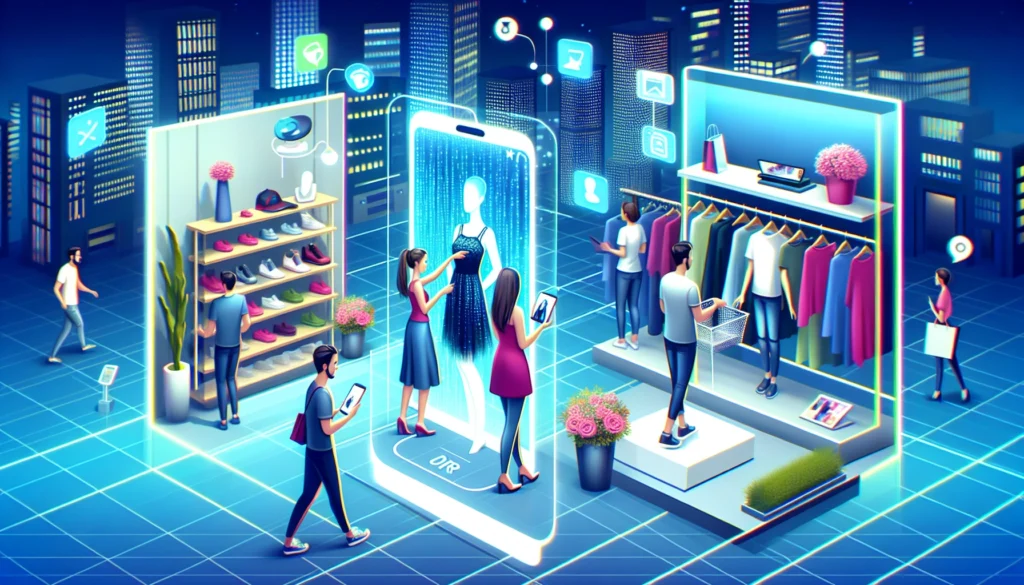
AR technology captivates audiences by creating interactive experiences that transform passive observers into active participants. This engagement is robust with younger demographics who enjoy interacting with products virtually before making a purchase decision. For example, Pepsi’s AR campaign in a London bus shelter made it appear like lions and UFOs were headed straight for Londoners, captivating their attention and creating a memorable experiential marketing experience. Innovative AR campaigns like this are revolutionizing how brands connect with their audience.
AR experiences stimulate customer engagement and loyalty, bridging the gap between online and real-world interactions. Tools like AR face filters and lenses on social media can make content highly shareable, expanding brand reach and driving sales. Additionally, these tools can significantly increase brand awareness by making the brand more visible and memorable to a broader audience.
Some examples of AR experiences include:
- Gucci Beauty’s immersive AR experience on Snapchat for its Bloom fragrance line
- IKEA’s AR app that allows customers to virtually place furniture in their homes before purchasing
- Pokemon Go, which uses AR to bring virtual creatures into the real world
These examples demonstrate the power of AR in reaching wider audiences and creating memorable experiences.
Furthermore, AR has been attributed to a significant boost in performance metrics. According to studies, 80% of brands implementing AR reported increased sales, and 57% of users were likelier to buy from brands offering AR experiences. These statistics highlight the importance of incorporating AR into marketing strategies to enhance customer satisfaction and drive business growth.
Enhancing Product Visualization
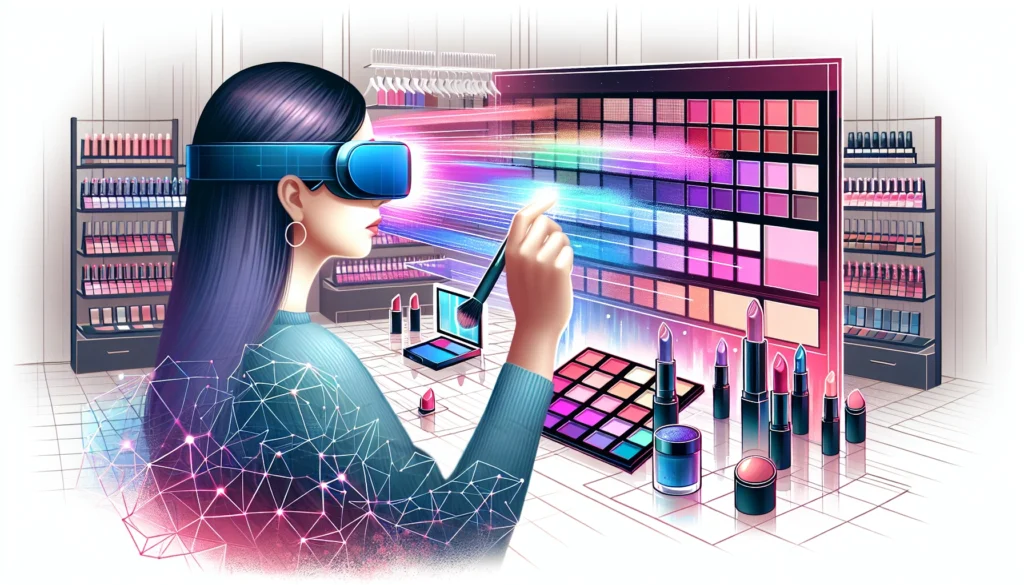
Augmented reality (AR) technology has enabled customers to visualize products or experiences using devices like smartphones and tablets. This capability brings the in-store experience into customers’ homes, allowing them to see how a product looks, feels, and fits without physically touching it. For instance, The Home Depot app helps customers visualize paint colors by considering the room’s lighting, objects, and shadows. It provides a realistic preview of how the paint color will appear in their space.
Car companies have also jumped on the AR bandwagon, letting customers visualize how a new car would look parked in their driveway, with customization options for its color and features. IKEA’s AR app lets users place furniture in their rooms, move it around, and see how it fits and matches their home before they buy. This powerful marketing tool reduces product uncertainty, increases buyer confidence, and ultimately drives sales by giving customers a clearer view of the product.
Moreover, AR shopping apps like the one developed with Argos enable customers to:
Preview furniture items in their homes, aiding in informed purchase decisions
Retailers leverage AR to present products in a virtual setting, which enhances the shopping process by making it more engaging and interactive
This approach not only improves customer satisfaction but also serves as an exceptional experience, making it an essential part of augmented reality marketing.
Interactive Product Demonstrations
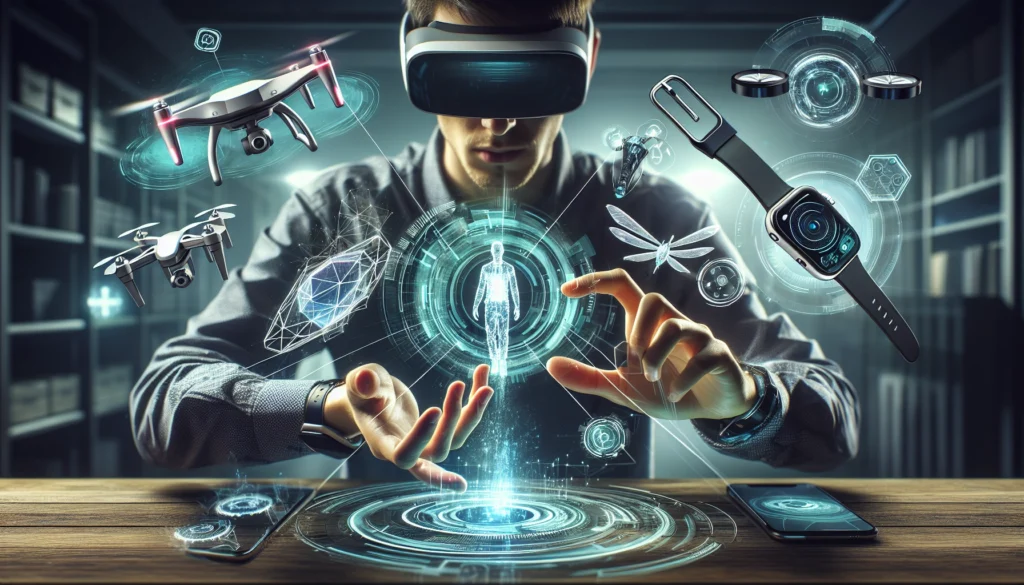
Augmented reality (AR) takes product demonstrations to the next level by allowing customers to interact with 3D models and view detailed demonstrations. Augmented reality apps utilize the device’s camera and sensors to overlay digital content onto the user’s environment, enhancing product demos and creating memorable experiences. For example, AR web solutions use web browsers with WebXR support to create AR experiences without the need for app installations.
AR glasses provide a more immersive and hands-free experience by seamlessly integrating digital content with the real world. This technology allows customers to enter the driver’s seat and explore virtual objects in a way that static images or videos cannot match. AR platforms offering tools like templates and drag-and-drop interfaces simplify the creation and distribution of AR content, making it accessible for businesses of all sizes to leverage AR marketing.
AR-powered interactive product demonstrations enhance customer engagement and satisfaction by enabling a deeper understanding of the products. This form of experiential marketing allows businesses to showcase products in a virtual environment, creating an immersive experience that resonates with their target audience and drives sales.
Virtual Try-Ons
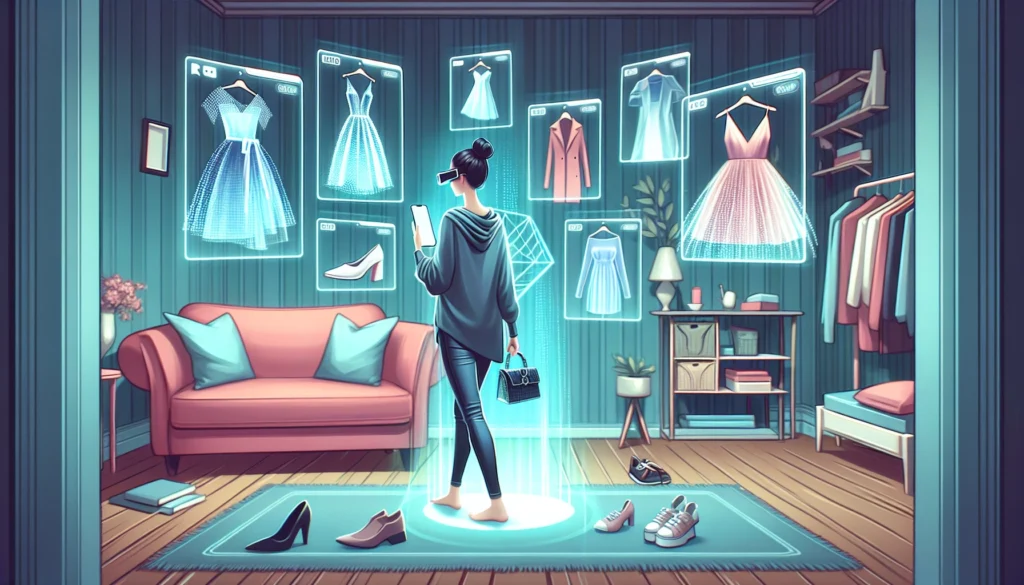
Virtual try-ons using augmented reality technology offer customers the convenience and flexibility to try on products from the comfort of their homes. Using smartphone scaling features, AR accurately simulates how a clothing item would appear on someone, thus minimizing the need for physical try-ons. This technology allows customers to browse and try on products virtually, making the shopping experience more flexible and convenient.
Several brands have successfully implemented AR for virtual try-ons. For example:
L’Oréal’s ModiFace experience allows users to preview makeup shades on photos and videos of themselves, cultivating a complete look using products available for purchase by leveraging AI video generation technology.
Gucci has also leveraged AR, enabling customers to virtually try on sneakers using their smartphones, which increased customer satisfaction and decreased the number of returns.
Sephora’s Virtual Artist app utilizes facial recognition to allow users to try different makeup products virtually and share their makeovers with friends.
The retail sector continues to benefit from AR, with virtual try-on solutions and immersive shopping experiences becoming more advanced. Estee Lauder used Snapchat AR filters to allow users to try on 60 different foundation shades before purchasing. These examples highlight how AR can provide an immersive experience, helping customers make informed purchase decisions and increasing engagement with the brand.
Augmented Reality Marketing for In-Store AR Experiences
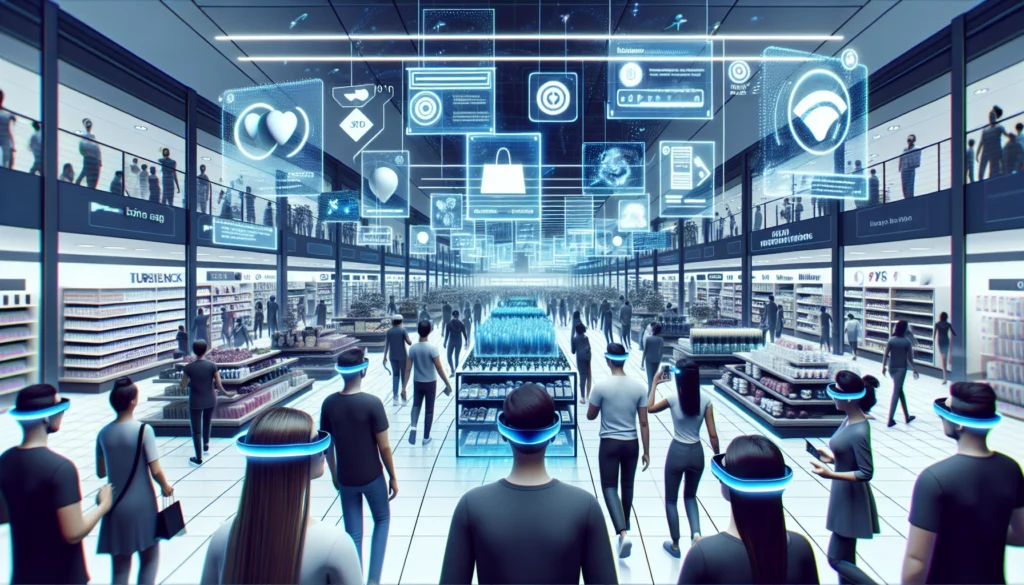
AR marketing is not limited to online shopping; it enhances in-store experiences by providing additional information, real-time promotions, and navigation assistance. A significant 66% of individuals express interest in utilizing AR technology to aid them while shopping. By overlaying contextual information onto products in real time, AR assists customers in making educated purchasing decisions.
Marks & Spencer’s AR app, List&Go, is an excellent example of how AR can be used in-store. It helps customers navigate supermarkets by displaying on-screen paths to products. Sephora uses AR in-store to provide options to test each product before buying, allowing shoppers to take home a small test sample, and offers a Virtual Artist tool for trying out shades of makeup. This creates a memorable experience for shoppers, making them more likely to return.
Additionally, AR-based navigation systems provide location-based recommendations and real-time promotions in retail environments. Amazon Salon uses an augmented reality app that allows customers to learn about products, watch educational videos, and experiment with new hair colors. These innovative AR marketing campaigns enhance the in-store experience and increase customer engagement and satisfaction.
AR Mirrors and Displays
The fitting room experience is enhanced, and staff workload is reduced as AR mirrors enable customers to try on clothes and accessories virtually. These mirrors allow virtual try-one of:
- makeup
- jewelry
- headwear
- eyeglasses
- watches
They provide a user-friendly interface that increases sales and decreases product returns.
Interactive AR displays with built-in cameras can let users envision items in different colors or environments, further enhancing customer interaction and satisfaction. This technology streamlines the shopping process and provides customers with an engaging and immersive experience.
Navigation and Assistance
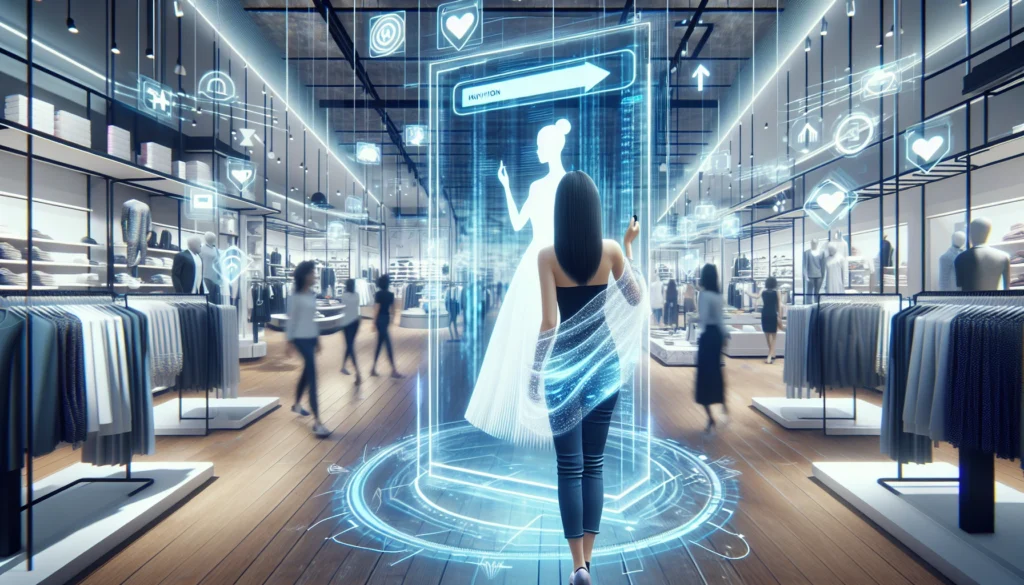
AR navigation in stores offers several benefits:
- Helps customers locate products easily
- Increases foot traffic, leading to measurable growth for businesses
- AR wayfinding uses Visual Positioning Systems (VPS) to provide step-by-step directions within complex mall layouts, enhancing the shopping experience.
Implementing AR navigation in shopping malls can lead to a 41% increase in foot traffic, highlighting the significant impact of this technology on customer engagement and satisfaction. Some potential benefits of AR navigation in shopping malls include:
- Improved customer experience and satisfaction
- Increased foot traffic and sales
- Enhanced navigation and wayfinding
- Personalized recommendations and promotions
- Interactive and engaging shopping experiences
These augmented reality apps demonstrate the potential of AR in transforming in-store navigation and assistance.
Personalized Shopping Experiences for Customer Engagement
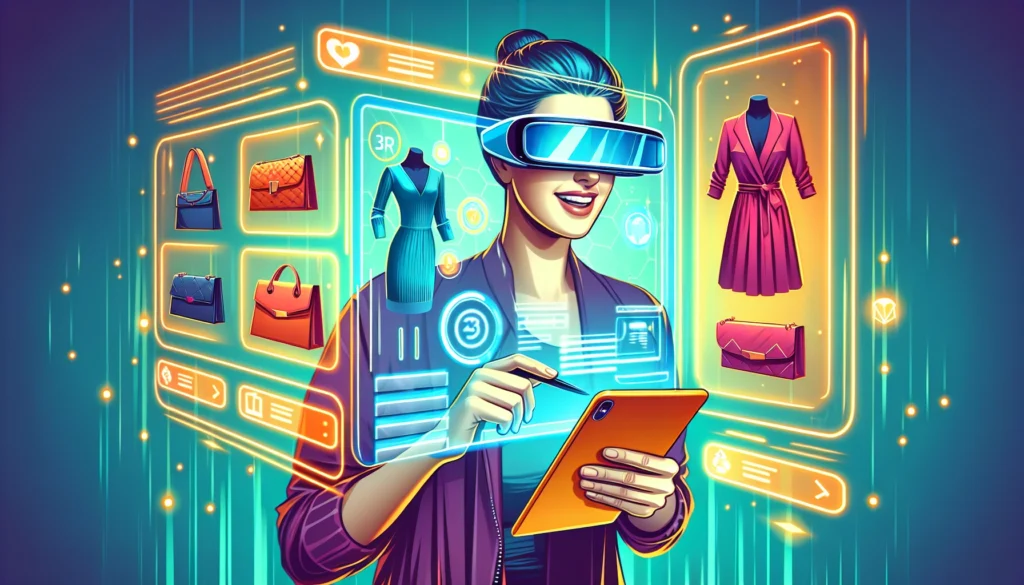
Augmented reality technology fosters customized shopping experiences, which heighten customer satisfaction and promote repeat business by:
Customizing recommendations and product offerings
Offering personalized recommendations based on customers’ style preferences and purchase history
Making the shopping experience more tailored to individual needs
This approach, backed by fortune business insights, helps in creating memorable experiences that resonate with customers.
Adaptive user interfaces in AR optimize content presentation based on user preferences and behaviors. For instance, AR applications can display virtual styling and fashion advice tailored to individual preferences and body types. This level of personalization not only improves customer satisfaction but also increases the likelihood of repeat business.
Furthermore, AR technology offers the following benefits in the retail industry:
Personalizes shopping experiences to individual customer preferences by scrutinizing customer data to offer bespoke product suggestions
Showcases products in a way that aligns with the customer’s personal style and space
Creates an immersive experience that enhances customer engagement and satisfaction
Gamification in Sales
Incorporating game-like elements in sales, augmented reality (AR) makes the shopping process more enjoyable and engaging, thereby boosting customer retention and brand loyalty. Gamification involves adding game-design elements such as:
challenges
quests
leaderboards
badges
achievements
For example, Tesco’s Discover shopping app has AR features like the ‘Big Night In’ family quiz game, making shopping a social activity. Rewards in gamification can be virtual currency, unlockable content, and real-world rewards, making shopping more fun. This increases customer satisfaction and brand loyalty by creating memorable experiences.
Interactive content like quizzes and tutorials can be part of the gamified journey, and progress bars or leveling up can increase user satisfaction. Businesses can keep users engaged without overwhelming them by having dynamic difficulty and timed challenges. This is a vital part of augmented reality marketing, driving customer engagement and retention.
Social Media Integration
Integration of social media with augmented reality AR technology results in:
Shareable, interactive content
Enhanced brand awareness and engagement across platforms
Businesses offering branded AR experiences are 41% more likely to capture consumer attention than those that do not
Snapchat introduced AR filters as ‘Lenses’ in 2015, leading to widespread adoption across other platforms like Facebook and Instagram by 2017.
Maybelline Thailand’s #SpreadGoodVibes campaign used AR filters on Facebook and Instagram to maintain engagement during the Covid-19 pandemic. Users can share photos of themselves sporting different shades of certain products with their social media followers, generating excitement and brand buzz through interactive experiences. This approach encourages users to spread branded content organically across their networks, increasing the brand’s reach and engagement.
According to research from Snap and Ipsos, AR-enhanced social media campaigns can increase sales conversions by up to 94%. Maybelline New York’s AR mirror in 2023 led to 3 million organic views, showcasing the power of interactive AR to draw consumer attention. This demonstrates how AR can be a powerful marketing tool for digital marketers, allowing users to create unique content that stands out and encourages followers to share and engage.
Data Collection and Insights
Insights and data collected from augmented reality (AR) interactions assist businesses in refining their marketing campaigns, personalizing offerings, and forecasting future trends. AR technology enables businesses to track user interactions and engagement with AR experiences, providing valuable insights into customer preferences and behaviors. This data is a useful tool for companies looking to understand an AR experience’s most captivating elements.
Companies can use the data collected from AR interactions to:
Refine their marketing campaigns
Personalize offerings to better meet customer needs
Reveal patterns in customer behavior
Aid in predicting future trends and customer needs
Gather data on which products customers interact with most
By utilizing AR, businesses can gather valuable data to inform product development and inventory management decisions. Additionally, a well-executed AR experience can positively impact a business’s reputation by setting it apart from the competition.
Overcoming Challenges of Leveraging AR for Sales and Marketing
The successful implementation of AR in sales requires businesses to navigate its unique set of challenges. One major hurdle is the cost associated with AR solutions, which can vary widely based on project complexity and technology type. Additionally, ongoing maintenance and updates add to the overall expense, making AR a perceived costly option for marketing.
Technical and compatibility issues are another significant challenge. Ensuring seamless integration of AR with existing sales workflows is crucial to avoid disruption and maintain operational efficiency. Moreover, AR provides potential vulnerabilities for cybercriminals to exploit, necessitating robust cybersecurity measures to protect sensitive customer data.
Measuring the return on investment (ROI) for AR can be particularly challenging. Businesses need to have realistic expectations and thorough planning to determine the effectiveness of their AR initiatives. Despite these challenges, the potential benefits of AR in enhancing customer engagement and driving sales make it a valuable tool for innovative marketing strategies.
Cost Considerations
The cost of AR solutions can range from affordable smartphone experiences to expensive high-end headsets like Microsoft HoloLens. Simpler AR technologies, such as marker-based AR, are more cost-effective compared to the more sophisticated markerless AR systems. However, the financial investment for AR technology can still vary significantly depending on the complexity and scale of the implementation.
Ongoing maintenance and updates are crucial for ensuring the smooth operation of AR applications, adding to the overall cost. While open-source software can reduce development costs, it may limit functionalities and customization, requiring businesses to carefully consider their options.
Despite the initial costs, the potential benefits of AR in improving customer engagement and reducing return rates make it a worthwhile investment.
Technical and Compatibility Issues
Ensuring seamless integration of AR with existing sales workflows is a common challenge that businesses must address to avoid disruption. ARCore, Google’s platform for creating immersive AR experiences, and ARKit, Apple’s platform for developing AR experiences, are compatible with iOS, Android, and various game engine environments, providing a robust foundation for AR applications.
However, AR technology also presents potential vulnerabilities for cybercriminals to exploit, necessitating robust cybersecurity measures to protect sensitive customer data.
Addressing these technical and compatibility issues is crucial for the successful implementation and operation of AR in sales and marketing.
Measuring ROI
Determining the ROI for AR can be challenging, requiring businesses to have realistic expectations and thorough planning. Metrics such as customer engagement, conversion rates, and sales performance can help gauge the effectiveness of AR initiatives, but quantifying the direct financial impact remains complex.
In January 2018, Boston Consulting Group surveyed marketers to get more insight into their AR experiences. When asked what was holding them back from increasing their AR spend, 42% of the marketing leaders said it was hard to measure the impact or return on investment (ROI) on AR. 27% said they didn’t have the tools to measure.
Despite the difficulty in measuring ROI, the potential benefits of AR in enhancing customer satisfaction and driving sales make it a valuable tool for innovative marketing strategies. Businesses need to focus on aligning AR initiatives with their overall marketing strategy to maximize the return on their investment.
Case Studies of Successful AR Marketing and Sales Campaigns
The success of augmented reality (AR) sales campaigns highlights the efficacy of interactive experiences in attracting and retaining customers, thus enhancing sales and brand awareness. Toyota’s 2023 AR campaign for the Toyota Crown allowed users to visualize the car in their environment and go on virtual test drives, leading to increased interest and sales. Revolut’s Ultra membership AR campaign in 2023 used ‘Platinum Portals in European cities to create social media buzz and draw attention to their premium offering.
Maybelline New York’s AR mirror in 2023 led to 3 million organic views, showcasing the power of interactive AR to draw consumer attention. Vodafone’s Elf and Seek AR game during Christmas 2023 encouraged interaction with outdoor sites and social media, leading to high engagement and increased visibility. These examples highlight how augmented reality marketing campaigns have proven effective in boosting engagement on social media platforms and driving sales.
Warner Bros.’ Barbie campaign with Snapchat allowed users to visualize themselves in outfits from the film, boosting social media engagement and brand awareness. L’Oréal Garnier’s Vitaverse AR filter on Instagram promoted the Vitamin C Glow Boost Night Serum with an immersive spa experience, significantly increasing online engagement. These case studies demonstrate the potential of AR as a powerful marketing tool for creating memorable and engaging experiences.
Future Trends in AR Marketing and Sales
With market growth and technological advancements fueling its adoption, the future of augmented reality (AR) in sales appears incredibly promising. Here are some key points to consider:
The augmented reality market is expected to grow significantly, reaching an estimated value of $198 billion by 2025.
Tim Cook believes that augmented reality will become as essential as eating three meals a day in our daily lives. This demonstrates his strong belief in the potential impact of AR on society.
This indicates that AR will become a mainstream marketing strategy, transforming how businesses interact with customers.
Artificial intelligence integrates more deeply with AR, enhancing functionalities like realistic human models and object detection. Wearable AR devices like Apple’s Vision Pro and Meta’s Quest Pro make AR experiences more immersive and practical for everyday use. Additionally, WebAR is gaining traction for its accessibility, providing AR experiences through web browsers compatible with most devices.
The evolution of AI marketing technology and the metaverse signifies a future where AR and virtual reality will play a significant role in virtual interactions, making them vital tools for digital marketers.
Summary
In summary, augmented reality revolutionizes sales and marketing by enhancing product visualization, enabling interactive product demonstrations, and offering personalized shopping experiences. From virtual try-ons to gamification and social media integration, AR creates engaging, memorable experiences that boost customer satisfaction and sales. While there are challenges to overcome, the potential benefits of AR are immense, promising a future where AR is an integral part of our daily lives and marketing strategies. Embrace AR today and transform the way you connect with your customers.
Frequently Asked Questions
How does augmented reality enhance product visualization?
Augmented reality (AR) enhances product visualization by allowing customers to see how a product looks, feels, and fits in their space using smartphones. This creates a more immersive and personalized shopping experience.
What are some examples of successful AR sales campaigns?
Some examples of successful augmented reality sales campaigns include Toyota’s virtual test drives for the Toyota Crown, Revolut’s ‘Platinum Portals,’ and Maybelline New York’s AR mirror, all of which led to millions of organic views and increased sales.
How does AR personalize the shopping experience?
Augmented reality personalizes the shopping experience by using customer data to offer personalized recommendations, which can increase customer satisfaction and repeat business.
What are the challenges of implementing AR in marketing?
Implementing augmented reality marketing comes with challenges such as technical limitations, privacy concerns, and ensuring equitable access. Businesses must also ensure brand messaging consistency and track AR campaigns’ success.
What future trends can we expect in AR for sales?
In the future, we can expect significant market growth, deeper integration with artificial intelligence, the rise of wearable augmented reality (AR) devices, and the evolution of the metaverse making AR a mainstream marketing strategy. These developments are set to reshape the sales landscape in the coming years.
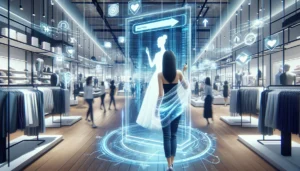
 B2B vs B2C: The Key Differences Every Business Needs to Know
B2B vs B2C: The Key Differences Every Business Needs to Know